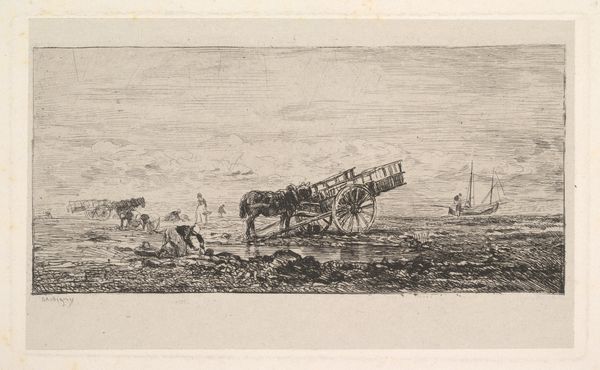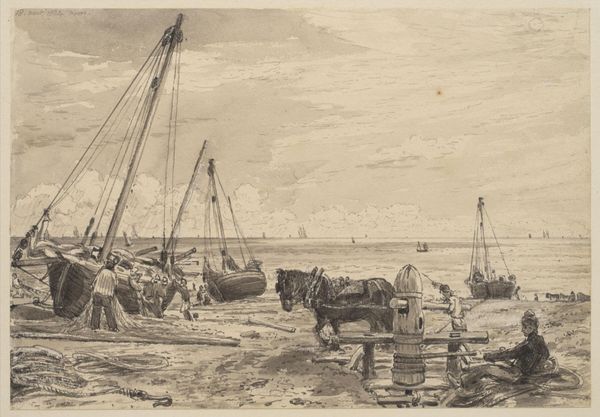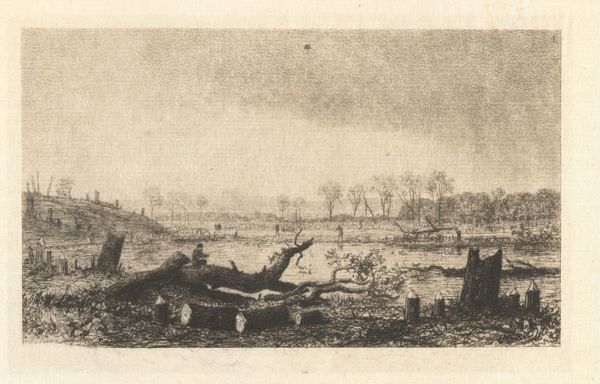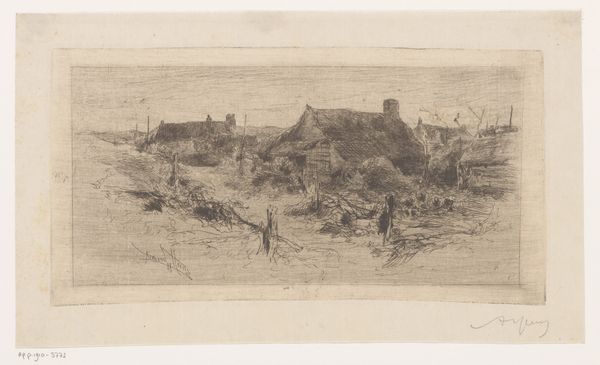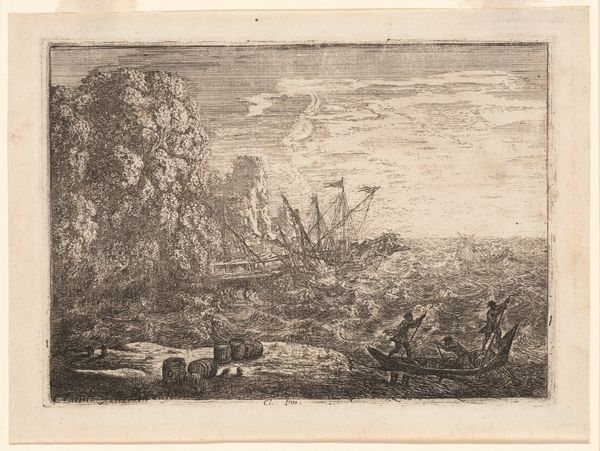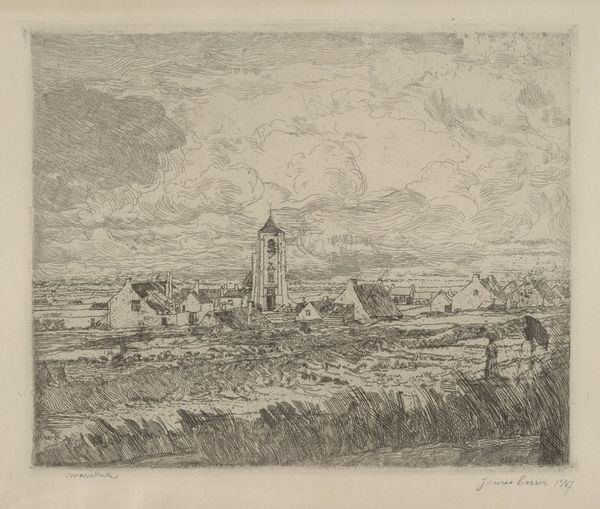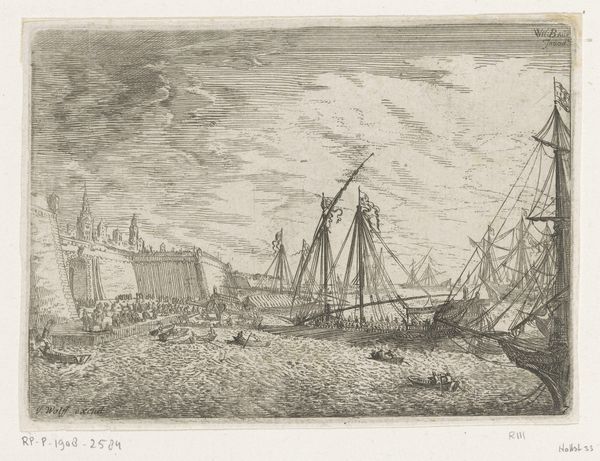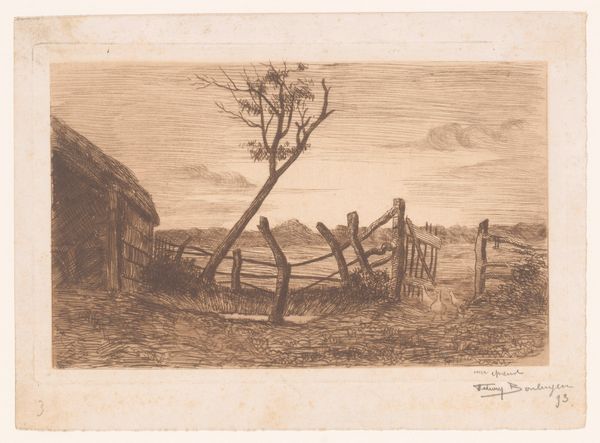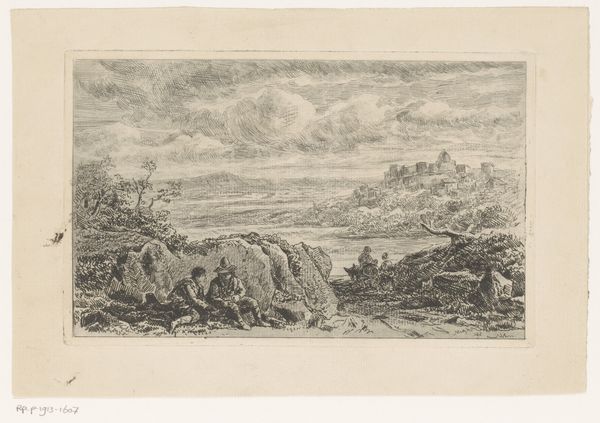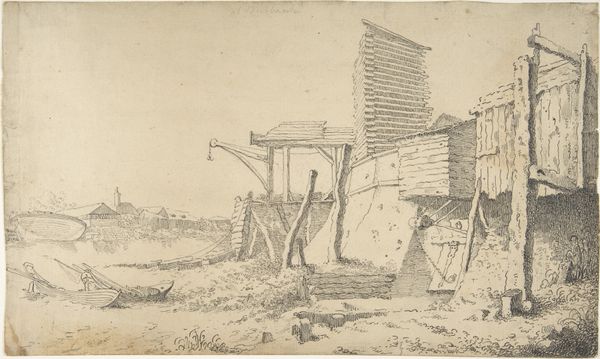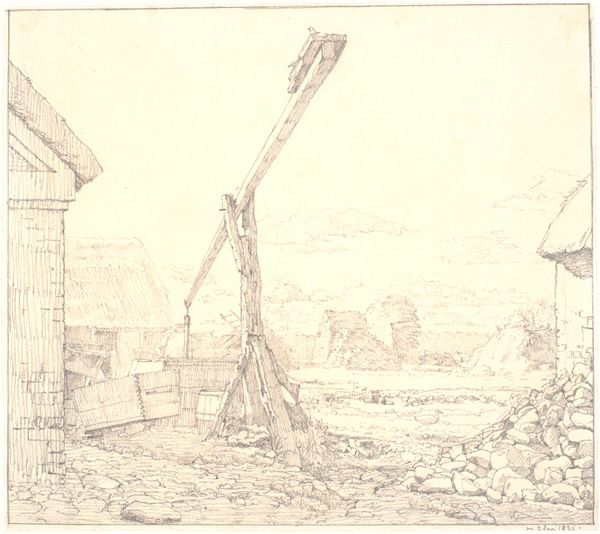
drawing, print, etching
#
pencil drawn
#
drawing
# print
#
etching
#
landscape
#
pencil drawing
Dimensions: Image: 7 3/4 in. × 13 in. (19.7 × 33 cm) Plate: 9 1/4 × 14 1/4 in. (23.5 × 36.2 cm) Sheet: 13 3/8 × 18 1/2 in. (34 × 47 cm)
Copyright: Public Domain
Charles François Daubigny created "The Harvest" in 1865, a print that captures a scene from the Morvan region of France. It offers a glimpse into the rural life of 19th-century France, a period marked by significant social and economic changes. Daubigny’s choice to depict the harvest is particularly interesting; agriculture was the primary source of income for many, yet it was also a sector undergoing considerable transformation due to industrialization. How did this affect the cultural identity of rural communities? The print also subtly touches on the relationship between humans, animals, and the land. The image of the laborers, the resting cattle, and the laden carts suggests a harmony and a mutual dependence. But what does it mean to aestheticize agricultural labor, when the reality of the working class was one of the long hours, poor conditions, and little pay? As you stand here, consider how "The Harvest" invites us to reflect on the value and dignity of rural labor, while simultaneously obscuring the realities of the labor.
Comments
No comments
Be the first to comment and join the conversation on the ultimate creative platform.
